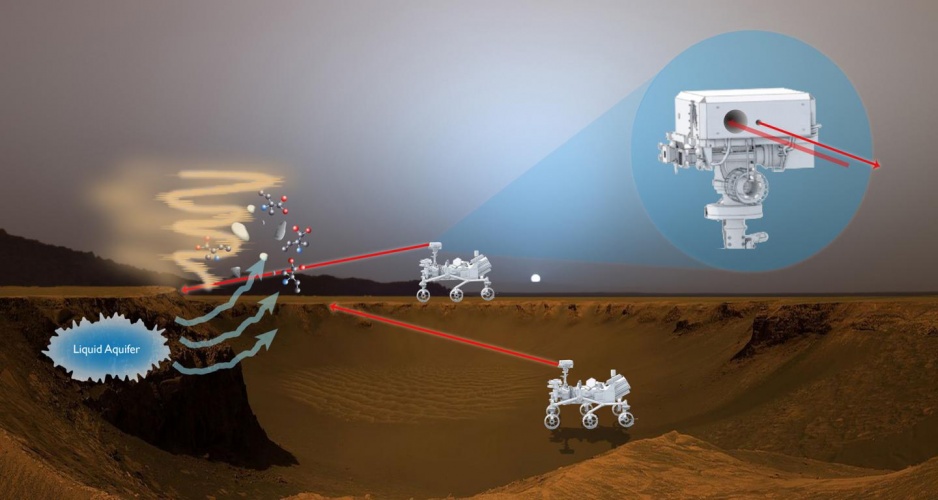NASA engineers believe a bio-indicator Lidar Instrument (BILI) used by the U.S. military to detect noxious substances in the air could be used to locate gases in the atmosphere that may signify life on Mars.
Earth observation satellites already use fluorescence to detect chemicals implicating climate change in our atmosphere, but the technique has yet to be used in exploring other planets. “NASA has never used it before for planetary ground-level exploration,” technologist Branimir Blagojevic of the Goddard Space Flight Center said of the technique. “If the agency develops it, it will be the first of a kind.”

Image source: NASA.
Blagojevic previously worked for Science and Engineering Services, which developed the version of the sensor used by the U.S. military. The planetary science version is envisioned as being placed on a rover’s mast. In operation, it would scan the local environment looking for dust plumes. Once it had detected one, it would use two ultraviolet lasers to pulse light at the dust, causing certain particles to fluoresce. Analyzing this fluorescence is important, as it reveals whether the dust contains organic materials and also gives information on the particle size.
According to Blagojevic, BILI would be a survey instrument rather than a detector for detailed analysis. It would be capable of detecting levels of complex molecules from a distance of several hundred meters in real time, and with no need for physical contact with the dust, there is no risk of contamination. What’s more, it could carry out surveys in areas not accessible to conventional rovers.
“This makes our instrument an excellent complementary organic-detection instrument, which we could use in tandem with more sensitive, point sensor-type mass spectrometers that can only measure a small amount of material at once,” Blagojevic said. “BILI’s measurements do not require consumables other than electrical power and can be conducted quickly over a broad area.”
The project is aiming to develop a smaller, more rugged version of the sensor. Blagojevic is also hoping to confirm that it can detect very small concentrations of a broad range of organic compounds in ground-level aerosols. It could also be installed on an orbiting spacecraft to detect life-indicating chemicals in the atmospheres of other planetary bodies, such as the moons of Saturn and Jupiter.
Source: The Engineer
Advertisement
Learn more about Electronic Products Magazine





